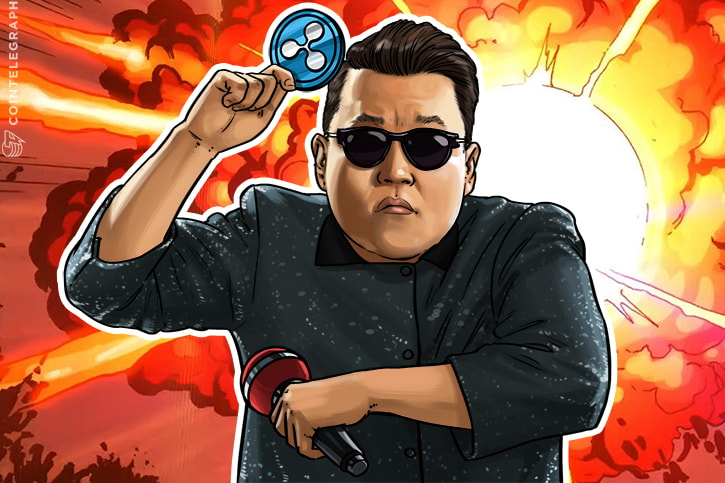The South Korean cryptocurrency market accounts for a relatively small percentage of global Bitcoin trades, but has nonetheless played a crucial role in bringing RIpple’s market capitalization from $40 billion to $88 billion. Ripple was one of the best-performing crypto assets of 2017, boasting a 360x increase in value. Exactly one year ago, on January 1, 2017, a single Ripple sold just six-tenths of a cent. Today, a single token is worth $2.29.
Ripple’s Spectacular Surge in Value
Over the past week, Ripple overtook Ethereum to become the second largest cryptocurrency in the global market, becoming the first “altcoin” to reach a $100 billion market valuation.
Many investors, especially Ethereum and Bitcoin holders, were taken aback by Ripple’s sudden surge. Analysts have attributed the recent increase in the value of Ripple to the formation of strategic partnerships between SBI Ripple Asia and South Korean banks, according to Forbes. However, the newly partnered banks will only begin processing payments on the Ripple network by the end of the first quarter of 2018. This has led some to question whether these partnerships are the real reason for Ripple’s incredible surge.
One such skeptic is Ryan Selkis, entrepreneur-in-residence at Ethereum-focused Blockchain production studio ConsenSys said in an interview:
"I know of no banks that are a) using it, or b) would touch it in any way as it is controlled by a SV company and 20% of all XRP in existence were taken by the founders. The product that Ripple are offering to banks is simply a point-to-point messaging tool with some smart cryptography underneath to ensure that transactions are atomic. The liquidity model used is the same as correspondent banking. Some banks will have deep pools of liquidity available to terminate payments. Ripple's approach with XRP has been to get it listed on a bunch of exchanges and ‘infer' but never explicitly say that banks are using it for settlement.”
Fact checking
The claim that no banks are using the Ripple network to process payments is not entirely accurate. Earlier this year, major Swedish bank SEB settled $180 million on the Ripple Blockchain network by sending cross-border payments on behalf of high profile clients. Banks in Thailand and Japan have also been processing near-instantaneous transactions for many months using Ripple.
However, it is true that no major banks are utilizing the Ripple Blockchain network on a daily basis to process large volumes of transactions.
South Korea behind surge
Tony Lyu, the founder and CEO of South Korean cryptocurrency exchange Korbit, told the New York Times that the South Korean market is heavily driven by FOMO, or fear of missing out. Lyu said:
“Word just spreads really fast in Korea. Once people are invested, they want everyone else to join the party. There’s been this huge, almost a community movement around this.”
Over the past week, the South Korean market and its largest cryptocurrency exchanges including Bithumb, Coinone, and Korbit have accounted for more than half of Ripple’s $4.5 bln daily trading volume.
South Koreans continue to pay a premium for their digital currency. On Bithumb, for instance, Ripple is being traded at $2.54, nearly 24 percent higher than the global average price.

Caption: Price of Ripple and other cryptocurrencies on Bithumb
Speculation and cryptocurrency mania in the South Korean market have become a major concern for the government policy makers. South Korean financial authorities have prohibited foreigners and underaged investors from investing in cryptocurrencies in an effort to bring the speculation under control.


